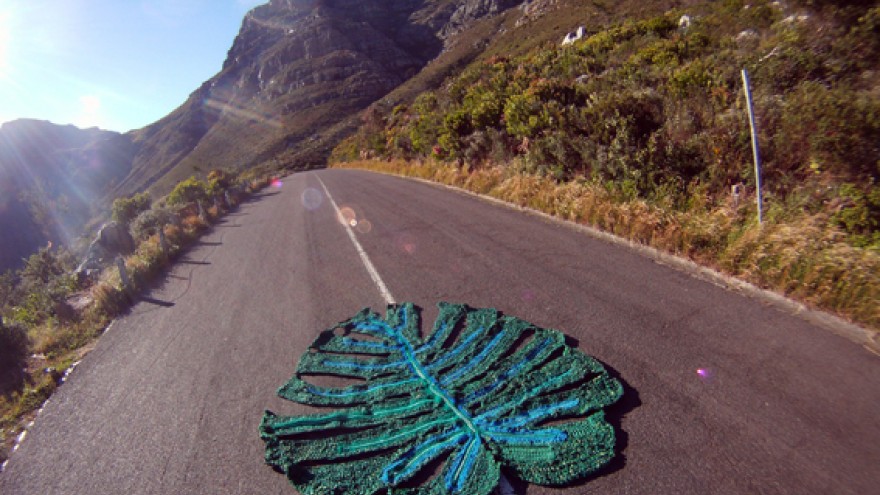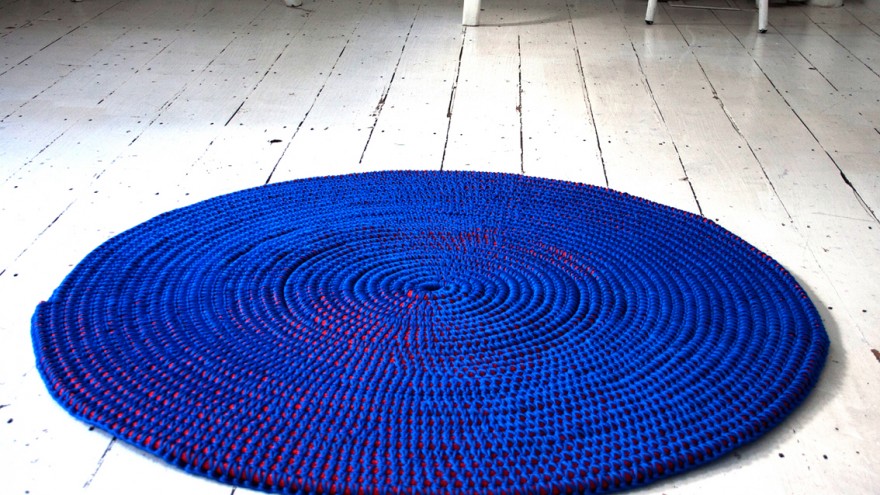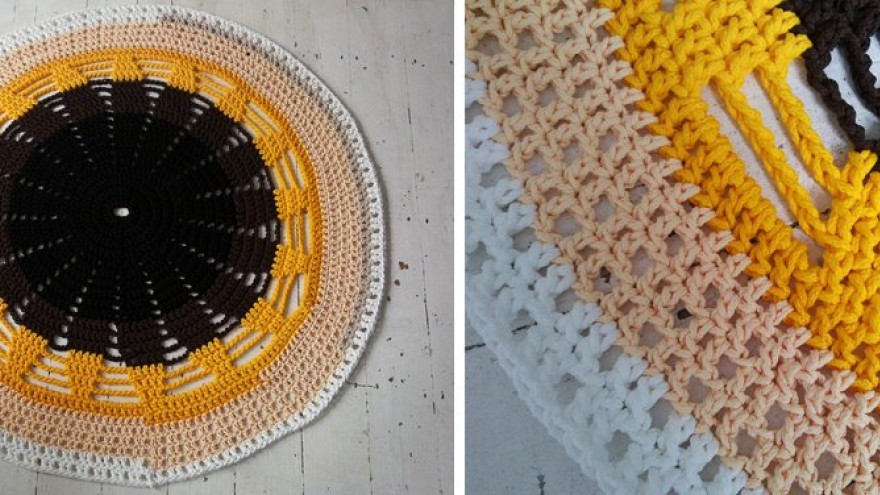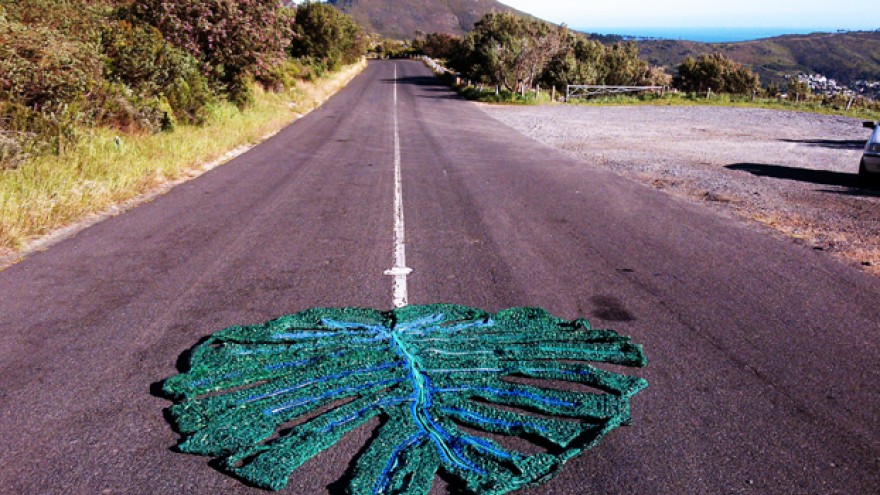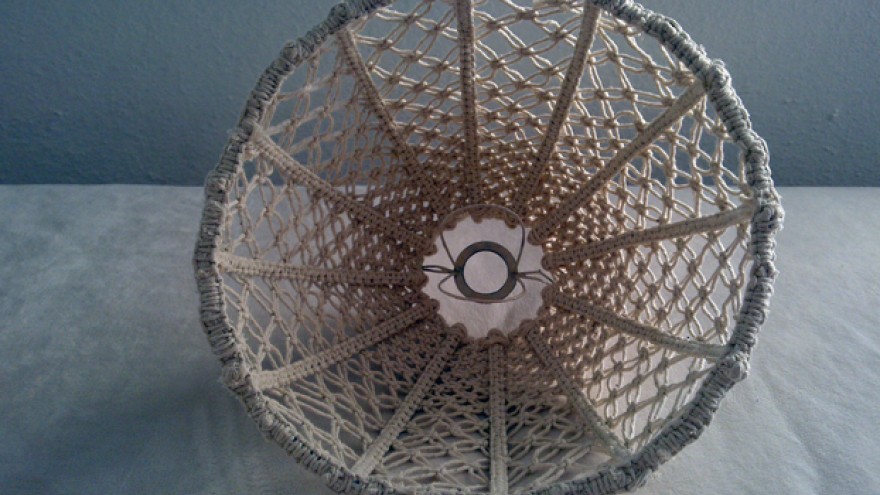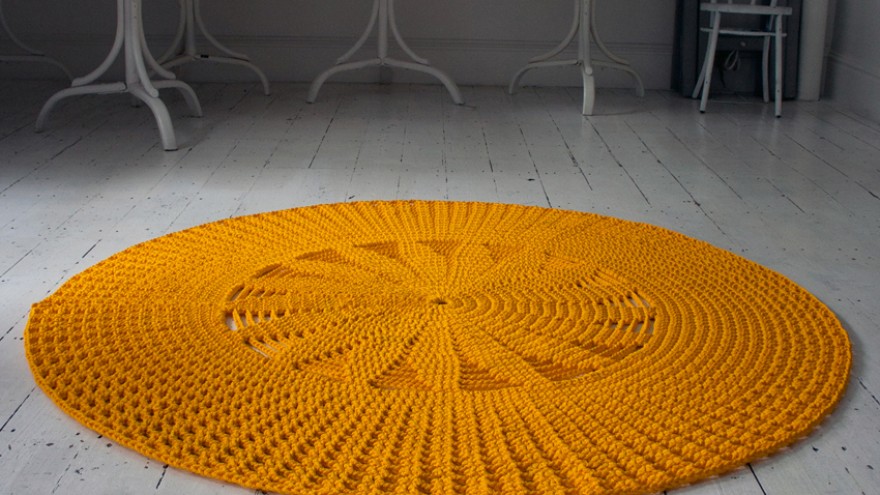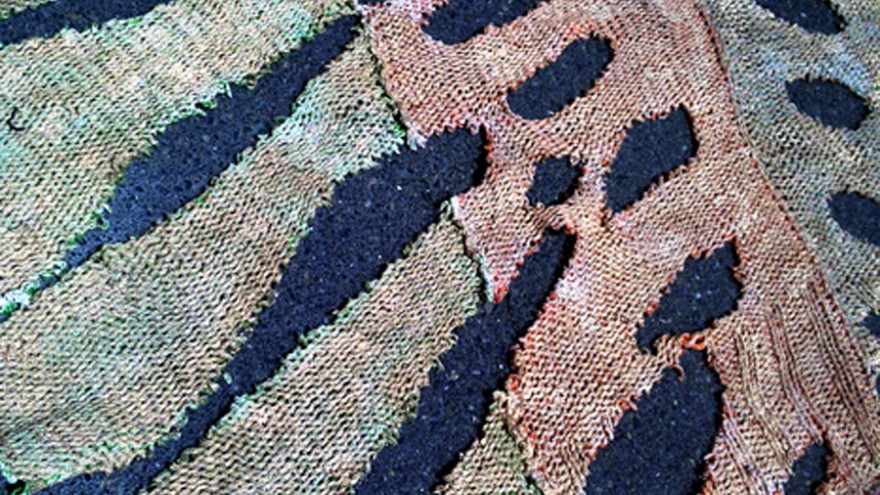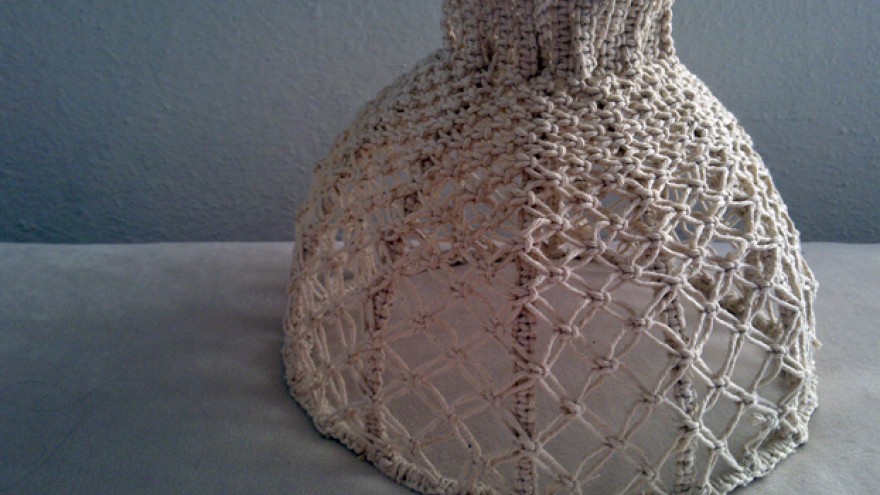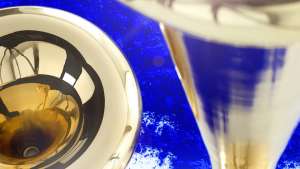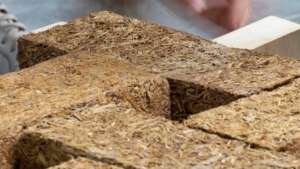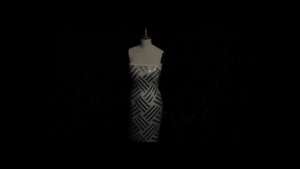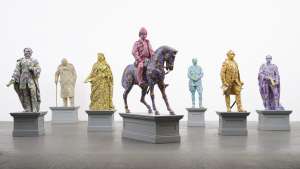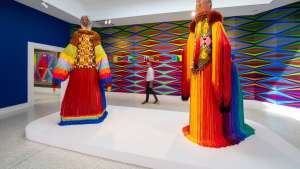From the Series
The oxymoronic Delicious Monster – or Monstera deliciosa – is a tropical plant that is beautiful in its complexity and a regular sight in South African gardens.
A fascination with its large fronds, sweet fruit and playful name inspired Cape Town texture designer Isabeau Joubert’s life-size replication of its leaves… by knitting them into mats!
Joubert first came to our attention in 2010 when she was gaining a reputation in the Mother City for covering various landmarks in knitted cosies, a process known as yarn bombing.
Rather than an impulsive ode to flora or a strange fetish for lampposts with socks, Joubert’s work spawns from her interest in the process of handcraft and techniques that have been carried down from generation to generation.
Joubert is a graphic designer by training but, after some eight years working in the field, grew weary of the disconnect between designing something on a screen and creating a physical product.
“I really missed getting into the design and putting myself into it. I had this desire to do more research about the design process and put more time into the design, understanding and appreciating the materials,” she justifies.
Like many South African women of her generation Joubert learnt both knitting and crocheting at school – something she detested at the time but retaught herself from a book in her 20s. “I thought handwork would allow me to take a more hands-on approach to design, to really understand the materials and the processes.”
The more Joubert found out about the knitting and crocheting techniques of yesteryear, the more interested she became in this craft process that has stood the test of time.
One of Joubert’s first interventions was yarn bombing, manifesting her interest in taking the softness of knitting out of the home and into a hard environment like the city, a place where we all connect with each other.
From there Joubert kept investigating and experimenting. Fascinated by the stories around the history of knitting and crochet, Joubert calls it a “fairy tale” with different bits of interesting information making up the history of these techniques. She explains that knitting was a nomadic activity and very revolutionary for its time because it signalled the moment when you could make materials (and garments) independent of a spinning wheel and weaving loom.
While she is intrigued by the origin of process Joubert is even more interested in the practicality and usefulness these techniques brought about. In her own work this is evident in the way she uses fabric offcuts to create her designs. The Delicious Monster, for example, was made entirely from off-cuts in what Joubert describes in almost poetic terms: “Just like plants take our waste materials and turn them into something practical so my Delicious Monster takes off-cuts and turns them into something useful. It’s the monster gobbling up the waste to make something delicious!”
The Delicious Monster also signals Joubert’s move away from geometric shapes to more organic forms. She plans on building up a series of her (mat) leaves, which she hopes to exhibit sometime in the future.
Specialising in bespoke, commissioned or one-off pieces, Joubert tends not to sell her designs in shops or at markets. “Markets and shops have a particular type of thing that works and because I don’t subscribe to a particular uniformity, selling my wares in these environments doesn’t really work,” she explains. Adding: “At the moment I’m still just walking my own path and doing what suits me.”
Judging by the overwhelmingly positive reactions to her creations, Joubert’s chosen path is clearly a good one. Reactions aside, her ultimate passion is for raw materials and reimagining them: “The basic idea is that over centuries people have been making things from materials in their environment but now we live in a time where everything is readily available so now we almost have to set our own (environmental) limitations and work with that.” As such, her designs allows her a physical reconnection to the environment.
For Joubert, who loves oversized chunkiness, bigger is better. But she also believes that everything must have an element of usefulness.
It also speaks to issues of sustainability. “When you make something you need to think about it a bit more because it is going to be there for a long time afterwards,” Joubert believes.
*Joubert's work also featured in trend forecaster Li Edelkoort's exhibition Totemism: Memphis Meets Africa at Design Indaba Expo 2013.

